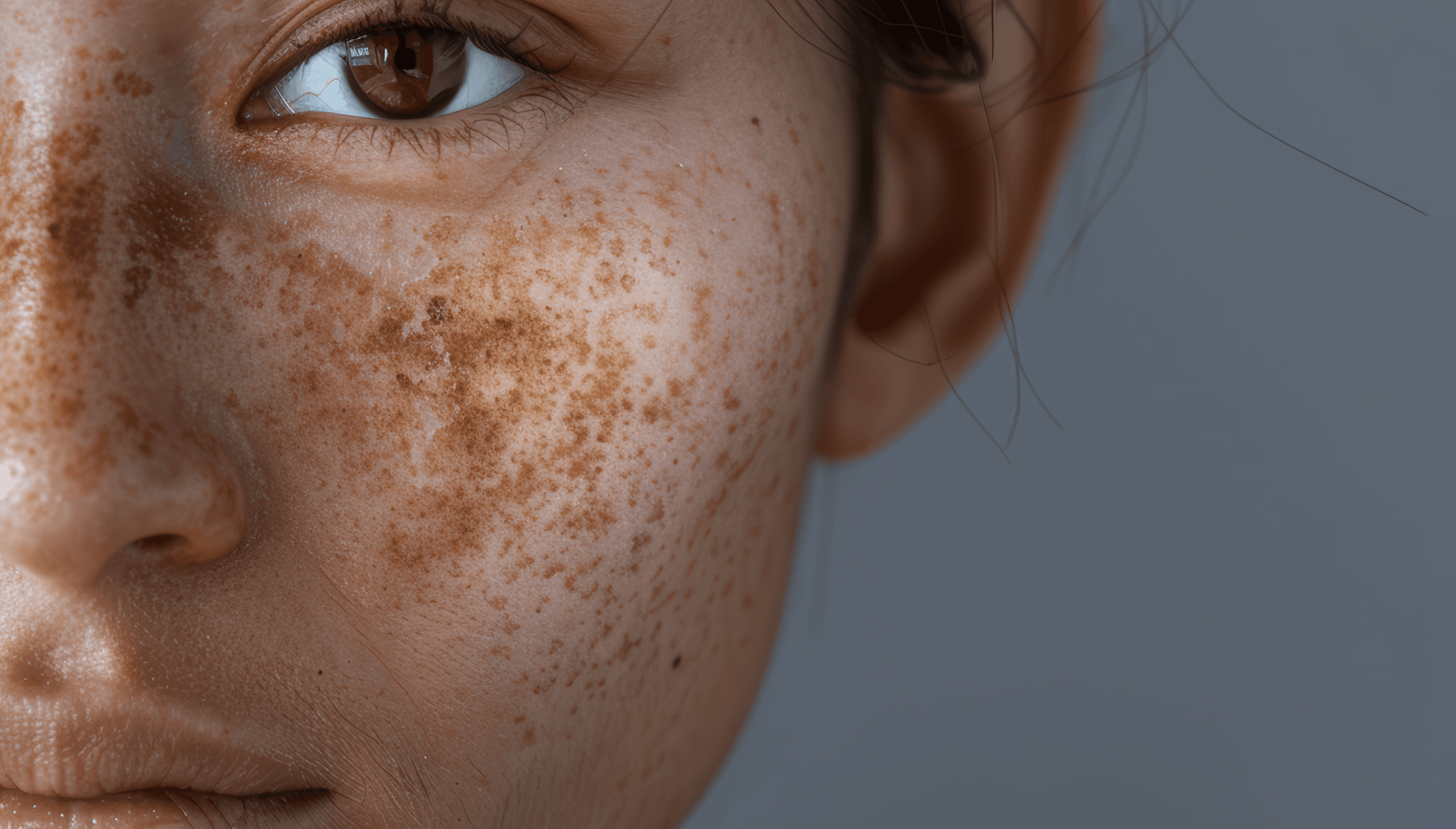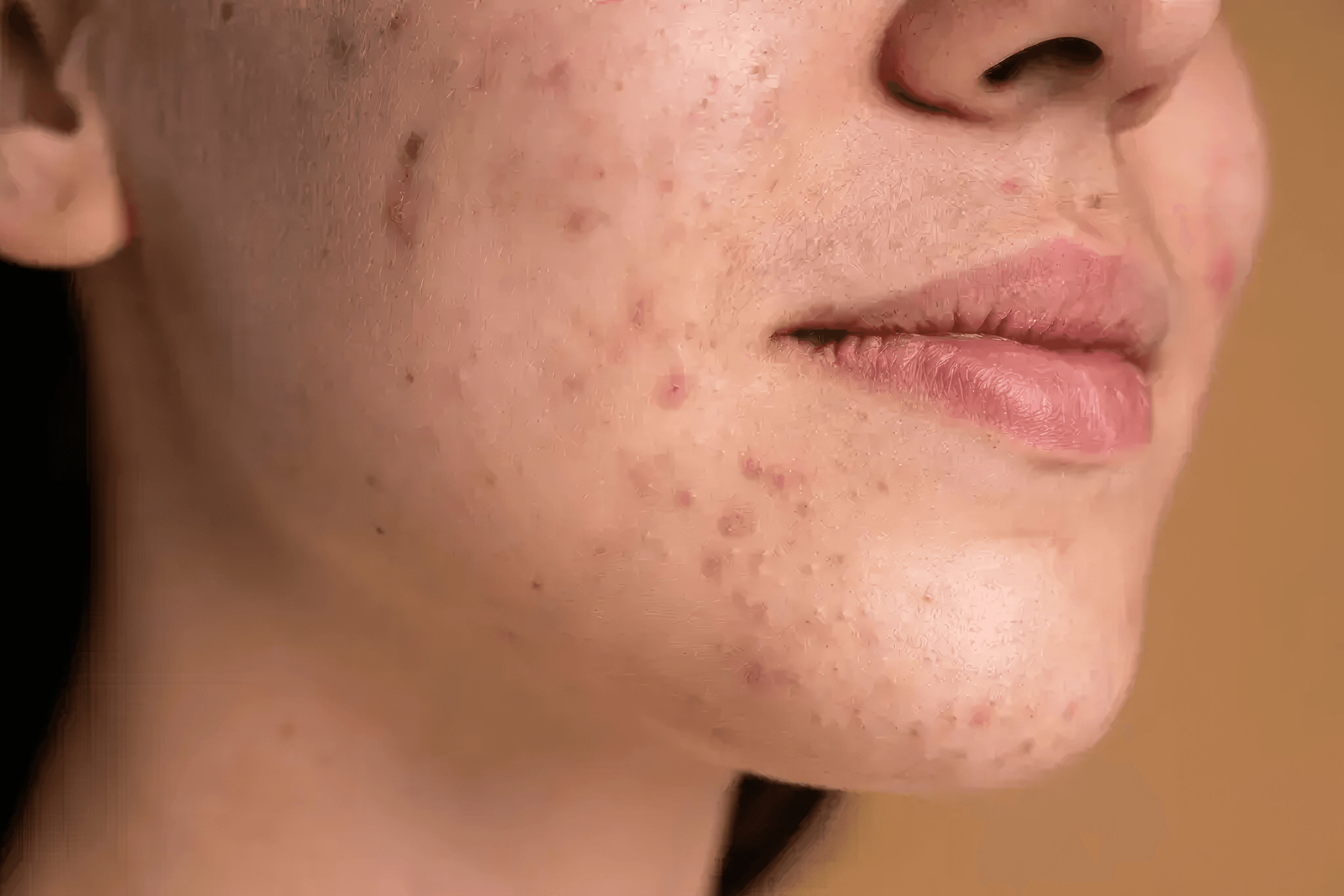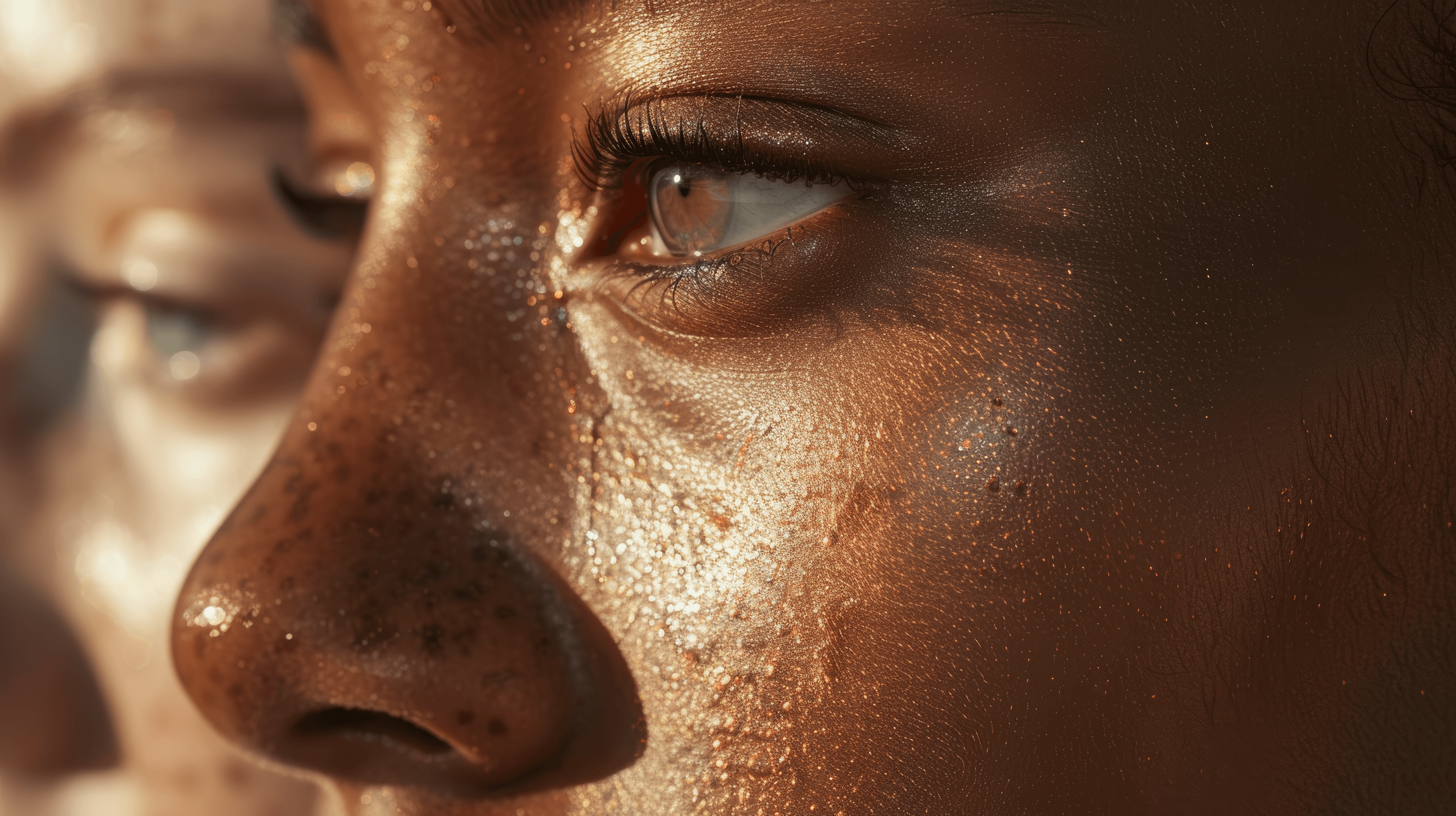The High Level
Freckles and Sunspots What’s the Difference?
While it can sometimes be hard to spot the difference, freckles and sunspots are actually very different and occur for different reasons. Freckles, though they can visibly change due to sun exposure, are primarily genetic. Freckles will typically form at a very early age (often in response to sun exposure) and can fade with age. They are changes to the pigmentation patterns in skin.
Sun spots (also referred to as age-spots or liver-spots), on the other hand, are caused by UV damage the deeper layers of skin where pigment is produced. Because sun spots are from long term UV damage, they typically manifest around age 50. Sun spots can be prevented and treated by being sun and UV safe and using ingredients like Hesperidin Methyl Chalcone, Licorice Root Extract, and Diglucosyl Gallic Acid that help tackle UV related pigmentation and damage.
The Science Deep Dive
The Genetics of Freckles
Freckles, scientifically known as ephelides, are rooted in genetics. They develop largely due to variations in pigmentation genes like MC1R, IRF4, ASIP, TYR and BNC2. Individuals who have certain mutations in these genes are predisposed to freckling.
Changes in MC1R lead to the "red hair, fair skin, freckles" phenotype. These changes reduce the ability to stimulate the brown/black pigment production.
Variations in the ASIP gene, can produce similar effects by inhibiting the activation of the pigment producing melanocytes.
IRF4 impacts pigmentation more directly as it controls the production of melanin by inhibiting the production of tyrosinase which is essential for melanin production..
The BNC2 gene seems to regulate the transfer and movement of melanin and pigment from the deeper layers to the surface, giving rise to the patchy nature of freckles.
Collectively, these genetic differences lead to excess pigment accumulation, or freckles. Freckles typically appear in early childhood around 2-3 years old, often in response to the sun, and often subside with age.
The Root Cause of Sunspots
Sunspots (solar lentigines) are a different pigmentation phenomenon, caused by long term UV damage and sun exposure. Here, the pigmentation trigger is chronic photo-damage to the pigment producing cells - keratinocytes and fibroblasts.
The damaged cells start to release more signaling molecules like growth factors, that cause the nearby melanocytes to increase pigment production, resulting in sun spots. Unlike freckles, most sun spots do not fade over time.
Nature vs Nurture
In essence, freckles illustrate how nature (genetics) can shape pigmentation patterns starting early in life. Sunspots highlight the effects of nurture (environment) can disrupt the skin's pigmentation process. So though outwardly similar, freckles and sunspots are Mother Nature's way of showing us the complexity of the pigmentation process.
What Can I do?
Understanding these different pathways is key to prevention and treatment. For Freckles and Sun Spots, alike, a high quality SPF will help prevent the initial trigger and formation of pigmentation. For sun spot treatment we recommend Even Element as it holistically targets the pigment production processes.
References
Praetorius, Christian, Richard A. Sturm, and Eirikur Steingrimsson. "Sun‐induced freckling: ephelides and solar lentigines." Pigment Cell & Melanoma Research 27.3 (2014): 339-350.
Andersen, William K., Robert R. Labadie, and Jag Bhawan. "Histopathology of solar lentigines of the face: a quantitative study." Journal of the American Academy of Dermatology 36.3 (1997): 444-447.
Choi, Wonseon, et al. "Molecular and histological characterization of age spots." Experimental dermatology 26.3 (2017): 242-248.
Read next



